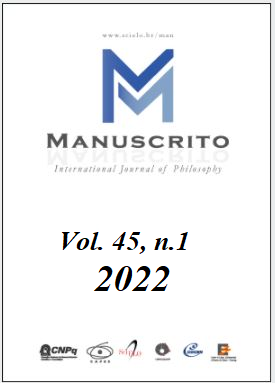Resumo
This study offers an innovative, sign-based analysis of English self pronouns (myself, yourself, herself, etc.). While rejecting the traditional characterization of these forms as reflexive pronouns, the study borrows from the tradition by analyzing these forms as a kind of emphatic pronoun. The forms’ distribution can be explained by positing that they are semantic signals deployed by speakers to meet communicative goals. Speakers choose between self and simple pronouns when the additional meaning of self forms, INSISTENCE ON AN ENTITY(S), will steer hearers in particular interpretive directions. This approach has led to the discovery that reflexive uses of self pronouns are an instantiation of the general tendency to use these forms for unexpected messages, including those in which a single referent is playing more than one role at one time. The presence of such a role conflict accounts not only for reflexive uses, but also for the appearance of self pronouns in picture noun phrases, logophoric contexts, and other previously unexplained exceptions to the structural reflexivity account.
Referências
Ahn, B. T. 2015. Giving Reflexivity a Voice: Twin Reflexives in English. University of California, Los Angeles.
Biber, D., Conrad, S., Reppen, R. 1998. Corpus Linguistics: Investigating Language Structure and Use. Cambridge University Press.
Cantrall, W. R. 1974. Viewpoint, Reflexives, and the Nature of Noun Phrases. The Hague: Mouton.
Chomsky, N. 1981. Lectures on Government and Binding. Dordrecht, The Netherlands: Foris Publications.
Chomsky, N. 1982. Some Concepts and Consequences of the Theory of Government and Binding. Cambridge, Massachusetts: MIT Press.
Chomsky, N. 1995. “Language and nature”. Mind 104 (413), pp. 1-61.
Clements, G. N. 1975. “The logophoric pronoun in Ewe: Its role in discourse”. Journal of West African Languages, 10, pp. 141-177.
Contini-Morava, E., Goldberg, B. S. (Eds.) 1995. Meaning as Explanation: Advances in Linguistic Sign Theory. Berlin: Mouton de Gruyter.
Davies, M. 2008- . The Corpus of Contemporary American English (COCA). Available online at https://www.english-corpora.org/coca/
Davis, J., Gorup, R. J., Stern, N. (Eds.) 2006. Advances in Functional Linguistics: Columbia School beyond its origins. Amsterdam: John Benjamins.
Dieter, S., Wright, S. 1995. Subjectivity and Subjectivisation: Linguistic Perspectives. Cambridge: Cambridge University Press.
Diver, W. 1984. The grammar of modern English. Unpublished manuscript.
Diver, W. “Theory”. In E. Contini-Morava and B. S. Goldberg (Eds.) (1995), pp. 43-114.
Diver, W. 2012/1975. “The nature of linguistic meaning”. In A. Huffman and J. Davis (Eds.), pp. 47-63.
Duffley, P. 2020. Linguistic Meaning Meets Linguistic Form. Oxford: Oxford University Press.
Erker, D., Shin, N. L. (Eds.) 2018. First Names: How theoretical primitives shape the search for linguistic structure (Papers in honor of Ricardo Otheguy). Philadelphia: John Benjamins.
Faltz, L. 1985. Reflexivization: A study in universal syntax. New York: Garland Publishing Inc.
Givón, T. 1993. English Grammar: A Function-Based Introduction. Vol. 2. Amsterdam: John Benjamins.
Goldberg, A. E. (Ed.) 1995. Conceptual Structure, Discourse and Language. Stanford, California: Center for the Study of Language and Information.
Haiman, J. 1983. Iconic and economic motivation. Language, 59(4), pp. 781-8193.
Haiman, J. 1995. Discourse, Grammar and Typology: Papers in honor of John W.M. Verhaar (Studies in Language Companion Series), Vol. 27. T. Givón, W. Abraham and S. A. Thompson (Eds.), Amsterdam: John Benjamins.
Huang, Y. 2000. Anaphora: A cross-linguistic study. New York: Oxford University Press.
Huang, Y. 1991. A neo-Gricean pragmatic theory of anaphora. Journal of Linguistics, 27(1), pp. 301-335.
Huffman, A. 2001. “The Linguistics of William Diver and the Columbia School”. Word, 52 (1), pp. 29-68.
Huffman, A. 2009. Modern English: A Columbia School grammar. Unpublished ms.
Huffman, A., Davis, J. (Eds.) 2012. Language: Communication and human behavior. The linguistic essays of William Diver. Leiden/Boston: Brill.
Kemmer, S. 1995. “Emphatic and Reflexive-self: Expectations, Viewpoint, and Subjectivity”. In S. Dieter and S. Wright (Eds.), pp. 55-82.
Kemmer, S., Barlow, M. 1996. “Emphatic-self in Discourse”. In Adele E. Goldberg (ed.), pp. 231-248.
König, E., Gast, V. 2002. “Reflexive Pronouns and Other Uses of Self-Forms in English”. Zeitschrift Für Anglistik Und Amerikanistik, 50 (3) pp. 1-14.
Kuno, S. 1987. Functional syntax: Anaphora, discourse and empathy. Chicago, IL: University of Chicago Press.
Langacker, R. W. 1987. Foundations of cognitive grammar: Theoretical prerequisites. Vol. 1. Stanford University Press.
Langacker, R. W. 1991. Concept, image, and symbol: The cognitive basis of grammar. R. Dirven and R. W. Langacker (Eds.), Berlin: Mouton de Gruyter.
Levinson, S. C. 1991. “Pragmatic Reduction of the Binding Conditions Revisited”. Journal of Linguistics, 27, pp. 107-161.
Quirk, R., Greenbaum, S., Leech, G., Svartvik, J. 1985. A Comprehensive Grammar of the English Language, New York: Longman.
Reinhart, T., Reuland, E. 1993. “Reflexivity”, Linguistic Inquiry, 24, pp. 657-720.
Reid, W. 2011. “The Communicative Function of English Verb Number.” Natural Language and Linguistic Theory, 29, pp. 1087-1146.
Reid, W. 1991. Verb and Noun Number in English: A Functional Explanation. New York: Longman.
Rolston, L. (Ed.) 2016. University of Washington Working Papers in Linguistics. https://depts.washington.edu/uwwpl/editions/vol34.html
Runner, J. T. 2007. “Freeing Possessed NPs from Binding Theory.” In L. Wolter and J. Thorson (eds.) University of Rochester Working Papers in the Language Sciences, 3(1), pp. 57-90.
Sperlich, D. 2020. Reflexive Pronouns: A Theoretical and Experimental Synthesis (Language, Cognition, and Mind, Vol. 8). Springer. https://doi.org/10.1007/978-3-030-63875-7
Stern, N. “The semantic unity of reflexive, emphatic, and other-self pronouns”, American Speech 79(3), pp. 270-280.
Stern, N. 2006. “Tell me about yourself”. In J. Davis, R. J. Gorup and N. Stern (Eds.), pp. 177-194.
Stern, N. 2016. “Word order as a signal of meaning: English reflexive pronouns and why we behave ourselves”. In L. Rolston (Ed.), pp. 111-119.
Stern, N. 2018. “Ditransitives and the English System of Degree of Control: A Columbia School analysis”. In D. Erker and N. L. Shin (Eds.), pp.157-188.
Van Hoek, K. 1997. Anaphora and Conceptual Structure. Chicago, IL: University of Chicago Press.
Zribi-Hertz, A. 1989. “Anaphor Binding and Narrative Point of View: English Reflexive Pronouns in Sentence and Discourse”. Language, 65, pp. 695-727.

Este trabalho está licenciado sob uma licença Creative Commons Attribution 4.0 International License.
Copyright (c) 2022 Manuscrito: Revista Internacional de Filosofia


